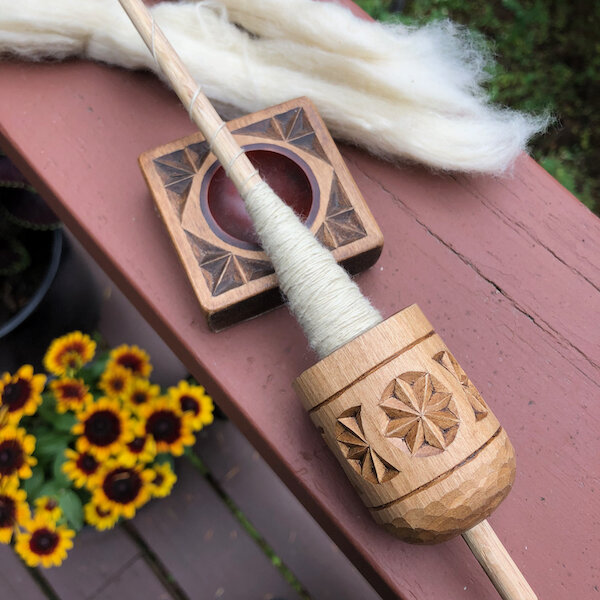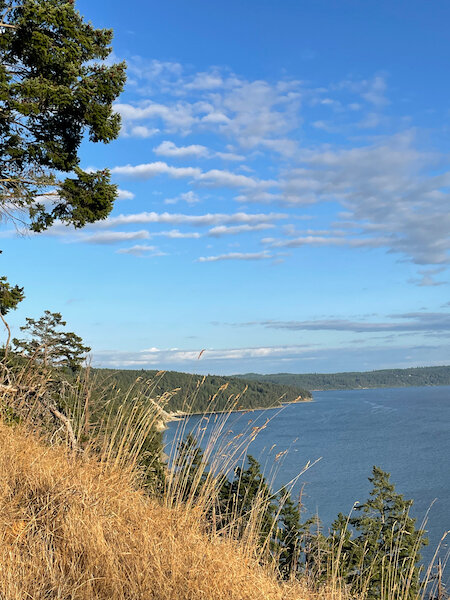I’ve been spinning a lot of cotton lately, some on the Pocket Wheel, but more on spindles. I’m in love with a new spindle from Allen Berry, for one thing. I can just get fully absorbed in this until it’s full.
Allen Berry moon phases (old style) spindle. Palo verde cotton from Traditions in Cloth.
Given my propensity for walking around spinning, though, my favorites for cotton at the moment are an Akha spindle from Laos (I call it Akha because it really did belong to an Akha woman, who sold it to Maren from Above the Fray, who sold it to me) and an Akha-style spindle made by Kristin Merrit. These two are breezy and brilliant spindles, and having good fiber has really helped me get more comfortable spinning cotton on the move.
Kristin’s spindle on the left, Lao spindle on the right. Traditions in Cloth cotton spun on the Lao spindle in the little skeins. Thai handwoven cotton mat background.
Much as I love Allen’s spindle, I have to stay in one place while using it. I was trying to keep spinning while reading something on my laptop, and the wall was too close on my left side, my drafting side.
Which made me realize the zen thing about spinning cotton: you have to be able to open your arms wide, to spread out, to fully expand.
Not that I always use big gestures with my hands and arms, but the possibility has to be there. It’s a mental expansiveness, as much as a physical thing.
To spin it well and comfortably, I have to have room to move and breathe freely. The best, smoothest make is when there is nothing interfering with the movement, no sense of restriction.
How symbolic can you get?
And now that the sun is shining again, I have to grab a spindle and get out there. That’s all I needed to say.
The colors of the sky at this time of year… no words, just awe and delight.



